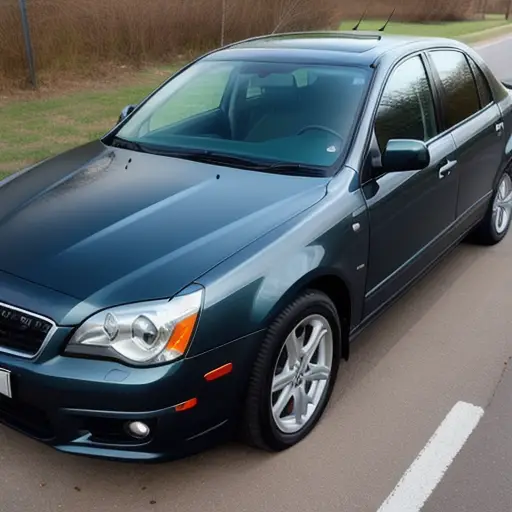Will Brake Cleaner Remove Paint? (Explained 2023)
Brake cleaner is a powerful solvent used to clean and degrease various components of a vehicle’s braking system. While it is highly effective at removing dirt, grease, and grime from metal parts, it can also potentially remove paint if used improperly. Brake cleaner contains chemicals that can dissolve or damage certain types of paint, particularly if it is left on the surface for an extended period of time or if it is used in excessive amounts.
If you are planning to use brake cleaner on a painted surface, it is important to take the necessary precautions to avoid damaging the paint. This may include testing the cleaner on a small, inconspicuous area first, using a minimal amount of cleaner, and wiping the surface thoroughly with a clean, dry cloth after application. Additionally, it is important to avoid getting the cleaner on any unpainted surfaces, as it can potentially damage rubber, plastic, or other materials.
What Is Brake Cleaner?
Brake cleaner is a type of solvent-based cleaner that is specifically designed to clean and degrease various components of a vehicle’s braking system. It is typically formulated with a blend of powerful chemicals, such as acetone, toluene, or methyl ethyl ketone, that are effective at breaking down and removing grease, oil, dirt, and other contaminants from metal parts. Brake cleaner is commonly used to clean brake rotors, calipers, pads, and drums, as well as other automotive parts that are subject to high levels of contamination.
Brake cleaner is available in aerosol cans, spray bottles, or larger containers, and is often used in combination with a stiff-bristled brush to scrub away dirt and grime. It is important to use brake cleaner in a well-ventilated area, as the fumes can be harmful if inhaled. Additionally, it is important to wear gloves and eye protection when working with brake cleaner, as it can be irritating to the skin and eyes.
What Are The Recommended Uses Of Brake Cleaners?
Brake cleaner is primarily used for cleaning and degreasing the various components of a vehicle’s braking system, including brake pads, rotors, calipers, and drums. However, it can also be used for a variety of other cleaning tasks in the automotive industry, such as cleaning engine parts, carburetors, and fuel injectors. Some of the recommended uses of brake cleaners include:
- Cleaning and degreasing brake components – Brake cleaner is highly effective at removing brake dust, grease, and other contaminants from brake components, ensuring that they operate properly.
- Preparing surfaces for painting – Brake cleaner can be used to clean and degrease metal surfaces prior to painting, helping to ensure that the paint adheres properly and provides a smooth finish.
- Cleaning engine parts – Brake cleaner can be used to clean engine parts, such as carburetors and fuel injectors, helping to improve engine performance and fuel efficiency.
- Removing adhesives – Brake cleaner can be used to dissolve and remove adhesives, such as tape residue or glue, from automotive surfaces.
- General cleaning – Brake cleaner can be used for general cleaning tasks in the automotive industry, such as cleaning tools, equipment, and work surfaces.
How To Protect Your Car Paint When Using Brake Cleaner?
When using brake cleaner, it’s important to take steps to protect your car’s paint to avoid any damage or discoloration. Here are some tips to protect your car paint when using brake cleaner:
- Cover any nearby surfaces – Before using brake cleaner, cover any nearby surfaces that could be affected by overspray, such as the car’s paint, with a protective sheet or tarp.
- Test in a small area first – Before using brake cleaner on a larger area of the car, test it on a small, inconspicuous area first to ensure that it does not cause any damage or discoloration.
- Avoid prolonged contact – Try to avoid prolonged contact with the car’s paint when using brake cleaner. Apply it directly to the component you are cleaning and wipe it off immediately.
- Rinse with water – After using brake cleaner, rinse the area with water to remove any residue that may have come into contact with the car’s paint.
- Apply wax or sealant – Applying a coat of wax or sealant to the car’s paint can provide an extra layer of protection against any potential damage from brake cleaner.
What Should I Do If I Spray Brake Cleaner On Car Paint?
If you accidentally spray brake cleaner on your car paint, it’s important to take quick action to minimize any potential damage. Here are some steps you can take if you spray brake cleaner on your car paint:
Wipe it off immediately
If you notice the overspray right away, wipe it off immediately with a clean and dry microfiber towel. Try to avoid rubbing the area too hard, as this may cause further damage.
Rinse with water
If the overspray has already dried, rinse the affected area with water immediately. Use a hose or a spray bottle to gently rinse off the brake cleaner residue.
Wash the car
After rinsing the area with water, wash the car thoroughly using a high-quality car shampoo and a clean microfiber towel. This will help remove any remaining residue and prevent any further damage to the paint.
Inspect the area
After washing the car, inspect the affected area for any signs of damage, such as discoloration or etching. If there are any noticeable signs of damage, you may need to take the car to a professional detailer for further treatment.
By taking these steps, you can minimize any potential damage caused by brake cleaner overspray and keep your car’s paint looking its best.
Can I Use Brake Cleaner On Painted Calipers?
Yes, brake cleaner can be used on painted calipers, but you should be careful to avoid overspray or contact with surrounding areas of your vehicle.
Before applying the brake cleaner, ensure that the calipers are cool to the touch and that you have covered or protected any surrounding areas that you do not want to come in contact with the brake cleaner.
Spray the brake cleaner directly onto the painted caliper, and use a clean microfiber towel to wipe away any dirt or grime. Avoid letting the brake cleaner sit on the painted caliper for an extended period of time, as it may cause damage to the paint.
After cleaning the painted calipers, rinse the area thoroughly with water and dry with a clean microfiber towel. Inspect the area for any signs of damage or discoloration, and touch up any spots as necessary.
Overall, brake cleaner can be a useful tool for cleaning painted calipers, but it’s important to take proper precautions to avoid any potential damage to the paint or surrounding areas of your vehicle.
Is Brake Fluid The Same As An Engine Degreaser?
No, brake fluid and engine degreaser are not the same thing and should not be used interchangeably.
Brake fluid is a specialized hydraulic fluid that is designed to be used in hydraulic brake systems. It is used to transfer force from the brake pedal to the brake calipers, which then press against the brake rotors to slow or stop the vehicle. Brake fluid is specifically formulated to withstand high temperatures and pressures, and it is critical for the safe operation of your vehicle’s braking system.
On the other hand, engine degreasers are used to remove dirt, oil, and other contaminants from the engine and other parts of the vehicle. They are usually formulated with solvents that can dissolve grease and grime, making it easier to clean the engine. Engine degreasers are not suitable for use in hydraulic brake systems and could potentially damage the brake components.
Brake fluid and engine degreaser are two entirely different products with different purposes, and it’s essential to use the right product for the right application to ensure your vehicle’s safety and performance.
Can I Substitute Isopropyl Alcohol With Brake Cleaner?
No, you should not substitute isopropyl alcohol with brake cleaner. Isopropyl alcohol and brake cleaner are two very different products with different chemical compositions and intended uses.
Isopropyl alcohol is a common household disinfectant and cleaning agent. It is a type of alcohol that is safe for use on human skin and surfaces such as countertops, electronic devices, and medical equipment. It evaporates quickly, leaving no residue behind.
On the other hand, brake cleaner is a specialized cleaning product designed specifically for cleaning brake components. It is formulated with powerful solvents that can dissolve and remove brake dust, dirt, and other contaminants from brake pads, rotors, and other brake system components. Brake cleaner is not intended for use on human skin or surfaces other than brake components, and it can be dangerous if used improperly.
Therefore, it is not safe or appropriate to substitute isopropyl alcohol with brake cleaner for disinfecting or cleaning purposes. It’s essential to use the correct product for the intended purpose to avoid any potential harm or damage.





